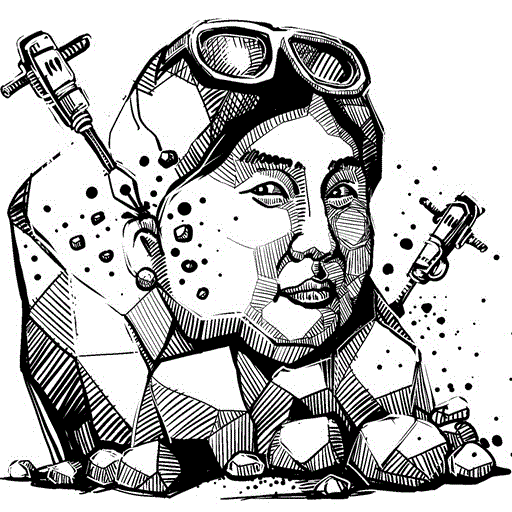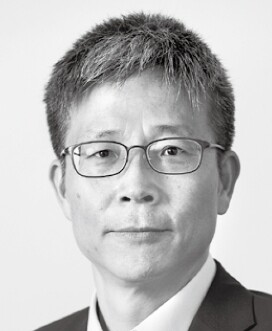hankyoreh
Links to other country sites 다른 나라 사이트 링크
[Correspondent’s column] Strange memories of a President’s late and ambiguous decisions

As I sift through old memories, I recall so many strange occurrences. I don’t mean to say that all of them can be attributed to Choi Sun-sil. That said, a lot of things start to make sense if you use Choi to connect the dots between questions and accusations. While I’m aware of the danger of relying on a convenient explanatory framework, it’s hard not to feel embarrassed that we were fighting with phantoms.
While I was covering South Korea’s Unification Ministry and Foreign Ministry before being assigned as the Hankyoreh’s Washington correspondent, there were several times that I found myself shaking my head in perplexity. Since these ministries had also been my beat during the administrations of former presidents Roh Moo-hyun (2003-2008) and Lee Myung-bak (2008-2013), I often noticed the backward way that decisions were made under the administration of current South Korean president Park Geun-hye.
The most disconcerting tendency that I noticed was that the Unification Ministry and Blue House were much slower than previous administrations in responding to statements released by North Korea. On the afternoon of June 30, 2014, for example, North Korea’s National Defense Commission issued a “monumentous proposal” in which it called for the cessation of mutual criticism and slander and hostile military actions and for the cancellation of American and South Korean plans for joint military exercises. Under previous South Korean administrations (indeed, under any ordinary administration), an official position would have been released the same day, even if it were late in the evening. Otherwise, newspapers would be plastered with North Korea’s position, with South Korea playing into the hands of North Korea’s propaganda warfare (which the Park administration hated so much).
But Seoul’s official response was not released until late in the afternoon of the next day, under the name of the spokesperson of the Unification Ministry. That response did not accept North Korea’s proposal or suggest a revision to it, but instead simply dismissed the proposal altogether for “lacking sincerity.” I couldn’t help wondering why they had waited a single day to release a statement as lame as this.
The same type of thing happened several other times. Even reporters who were pestering the Unification Ministry to quickly release a statement would sometimes give up and go home when the ministry repeatedly said that there had been “no contact from the Blue House.” Officials with a more detailed understanding of the situation told us why the statements were taking so long: after the ministry submitted a draft statement to Park, she would send it back after editing it with a red pen. Now I find myself unsure whether the person holding the red pen was Park or Choi.
There was also something mysterious about how appointments and decisions were made. Drafts of policies and candidates for senior positions at government ministries are submitted to the president via the offices of Blue House senior secretaries and Blue House personal secretaries. Some of the policy drafts and appointments that were sent back were marked with circles, triangles and X marks. A circle indicated that the plan should be executed while an X mark meant that the plan should not be executed. But people working at the Blue House often complained that they didn’t know what in the world the triangle was supposed to mean.
There was no one who could ask Park what the triangles meant. Cabinet ministers, senior secretaries, personal secretaries and administrators – none of them could have a private meeting with Park, and it was even hard to get her on the phone. With senior secretaries, personal secretaries and administrators all relying solely on Senior Private Secretary to the President Jung Ho-sung, it was no wonder that discipline at the Blue House would be poor. Aside from Park and Choi, all the Blue House officials were little more than figureheads taking up space. Was the triangle drawn by Park or by Choi? The question is a sad one.

With Park frequently overruling the suggestions made by crucial ministries, it should come as no surprise that reporters and government officials started forming reasonable suspicions about who was behind those changes. But this speculation never went any further than Jung Ho-sung, who had been closely involved in security and foreign policy issues since the transitional committee at the beginning of Park’s presidency.
Even after I was assigned to the United States, I was asked by American experts on the Korean Peninsula on several occasions about who in the world was giving advice to Park. These experts did not understand why Park was so committed to the idea of North Korean regime collapse, in defiance of what she promised at the time of her inauguration, or why she made abrupt decisions such as completely shutting down the Kaesong Industrial Complex this past February. I will feel pretty sheepish when I see them now.
By Yi Yong-in, Washington correspondent
Please direct questions or comments to [english@hani.co.kr]

Editorial・opinion
![[Column] Park Geun-hye déjà vu in Yoon Suk-yeol [Column] Park Geun-hye déjà vu in Yoon Suk-yeol](https://flexible.img.hani.co.kr/flexible/normal/500/300/imgdb/original/2024/0424/651713945113788.jpg) [Column] Park Geun-hye déjà vu in Yoon Suk-yeol
[Column] Park Geun-hye déjà vu in Yoon Suk-yeol![[Editorial] New weight of N. Korea’s nuclear threats makes dialogue all the more urgent [Editorial] New weight of N. Korea’s nuclear threats makes dialogue all the more urgent](https://flexible.img.hani.co.kr/flexible/normal/500/300/imgdb/original/2024/0424/7317139454662664.jpg) [Editorial] New weight of N. Korea’s nuclear threats makes dialogue all the more urgent
[Editorial] New weight of N. Korea’s nuclear threats makes dialogue all the more urgent- [Guest essay] The real reason Korea’s new right wants to dub Rhee a founding father
- [Column] ‘Choson’: Is it time we start referring to N. Korea in its own terms?
- [Editorial] Japan’s rewriting of history with Korea has gone too far
- [Column] The president’s questionable capacity for dialogue
- [Column] Are chaebol firms just pizza pies for families to divvy up as they please?
- [Column] Has Korea, too, crossed the Rubicon on China?
- [Correspondent’s column] In Japan’s alliance with US, echoes of its past alliances with UK
- [Editorial] Does Yoon think the Korean public is wrong?
Most viewed articles
- 1[Guest essay] The real reason Korea’s new right wants to dub Rhee a founding father
- 2Why Korea shouldn’t welcome Japan’s newly beefed up defense cooperation with US
- 3[Column] ‘Choson’: Is it time we start referring to N. Korea in its own terms?
- 4New AI-based translation tools make their way into everyday life in Korea
- 5[Column] Park Geun-hye déjà vu in Yoon Suk-yeol
- 6Senior doctors cut hours, prepare to resign as government refuses to scrap medical reform plan
- 7Opposition calls Yoon’s chief of staff appointment a ‘slap in the face’
- 8Will NewJeans end up collateral damage in internal feud at K-pop juggernaut Hybe?
- 9Terry Anderson, AP reporter who informed world of massacre in Gwangju, dies at 76
- 10Thursday to mark start of resignations by senior doctors amid standoff with government